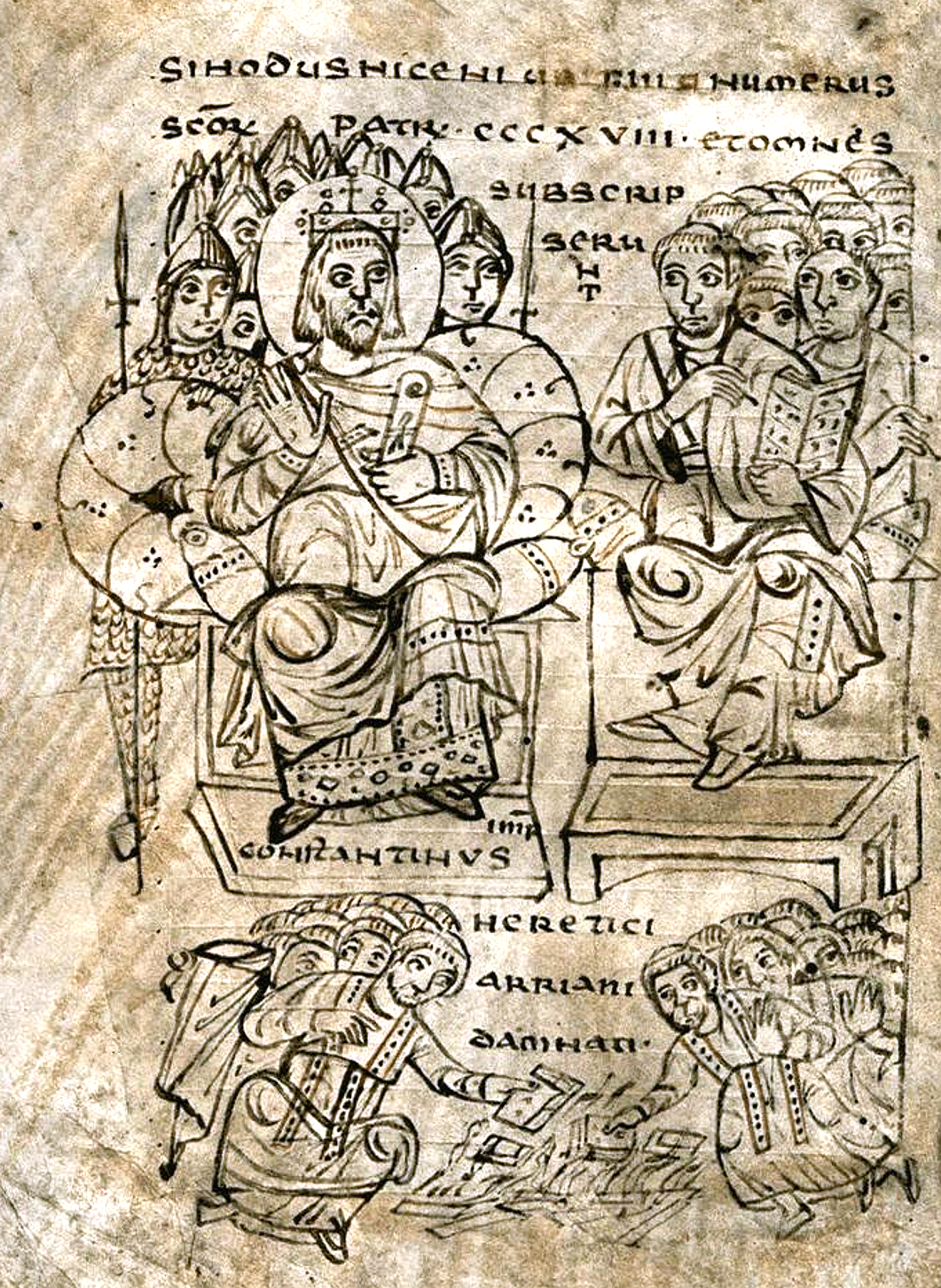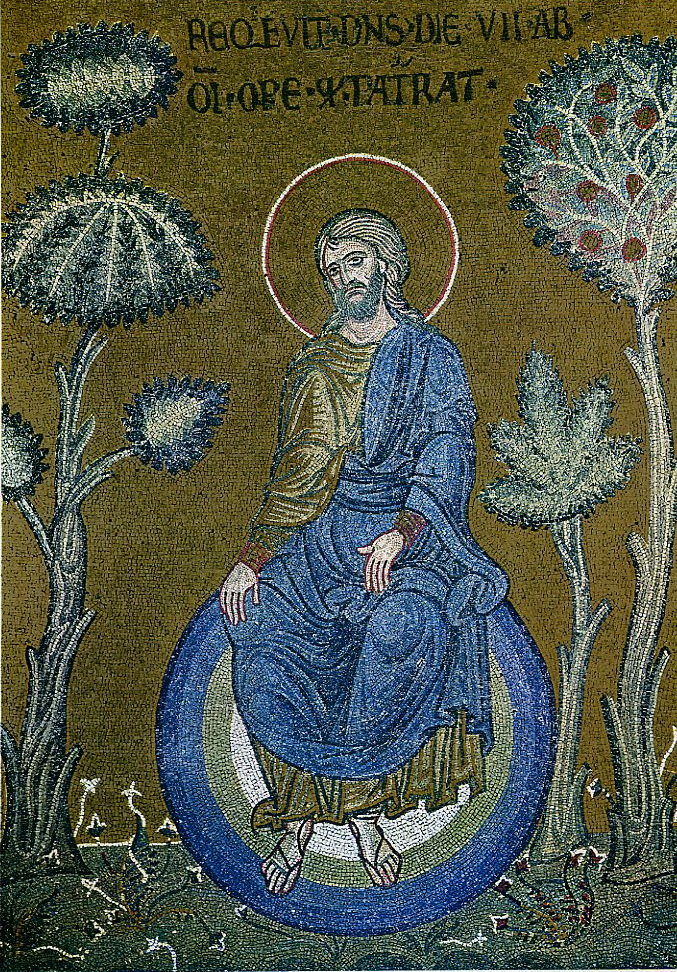|
Adoptionist
Adoptionism, also called dynamic monarchianism, is an early Christian nontrinitarian theological doctrine, which holds that Jesus was adopted as the Son of God at his baptism, his resurrection, or his ascension. How common adoptionist views were among early Christians is debated, but it appears to have been most popular in the first, second, and third centuries. Some scholars see adoptionism as the belief of the earliest followers of Jesus, based on the epistles of Paul and other early literature. However, adoptionist views sharply declined in prominence in the fourth and fifth centuries, as Church leaders condemned it as a heresy. Definition Adoptionism is one of two main forms of monarchianism (the other being modalism, which considers God to be one while working through the different "modes" or "manifestations" of God the Father, God the Son, and God the Holy Spirit, without limiting his modes or manifestations). Adoptionism denies the eternal pre-existence of Christ, an ... [...More Info...] [...Related Items...] OR: [Wikipedia] [Google] [Baidu] |
Diversity In Early Christian Theology
Traditionally in Christianity, orthodoxy and heresy have been viewed in relation to the "orthodoxy" as an authentic lineage of tradition. Other forms of Christianity were viewed as deviant streams of thought and therefore "heterodox", or heretical. This view was challenged by the publication of Walter Bauer's ''Rechtgläubigkeit und Ketzerei im ältesten Christentum'' ("Orthodoxy and Heresy in Earliest Christianity") in 1934. Bauer endeavored to rethink Early Christianity historically, independent from the views of the current church. He stated that the 2nd-century church was very diverse and included many "heretical" groups that had an equal claim to apostolic tradition. Bauer interpreted the struggle between the ''orthodox'' and ''heterodox'' to be the "mainstream" Church of Rome struggling to attain dominance. He presented Edessa and Egypt as places where the "orthodoxy" of Rome had little influence during the 2nd century. As he saw it, the theological thought of the "Orien ... [...More Info...] [...Related Items...] OR: [Wikipedia] [Google] [Baidu] |
Trinity
The Christian doctrine of the Trinity (, from 'threefold') is the central dogma concerning the nature of God in most Christian churches, which defines one God existing in three coequal, coeternal, consubstantial divine persons: God the Father, God the Son (Jesus Christ) and God the Holy Spirit, three distinct persons sharing one ''homoousion'' (essence) "each is God, complete and whole." As the Fourth Lateran Council declared, it is the Father who begets, the Son who is begotten, and the Holy Spirit who proceeds. In this context, the three persons define God is, while the one essence defines God is. This expresses at once their distinction and their indissoluble unity. Thus, the entire process of creation and grace is viewed as a single shared action of the three divine persons, in which each person manifests the attributes unique to them in the Trinity, thereby proving that everything comes "from the Father," "through the Son," and "in the Holy Spirit." This doctrine ... [...More Info...] [...Related Items...] OR: [Wikipedia] [Google] [Baidu] |
Nontrinitarianism
Nontrinitarianism is a form of Christianity that rejects the mainstream Christian doctrine of the Trinity—the belief that God is three distinct hypostases or persons who are coeternal, coequal, and indivisibly united in one being, or essence (from the Ancient Greek ). Certain religious groups that emerged during the Protestant Reformation have historically been known as antitrinitarian. According to churches that consider the decisions of ecumenical councils final, trinitarianism was definitively declared to be Christian doctrine at the 4th-century ecumenical councils, that of the First Council of Nicaea (325), which declared the full divinity of the Son, and the First Council of Constantinople (381), which declared the divinity of the Holy Spirit. In terms of number of adherents, nontrinitarian denominations comprise a small minority of modern Christians. After the denominations in the Oneness Pentecostal movement, the largest nontrinitarian Christian denominations ar ... [...More Info...] [...Related Items...] OR: [Wikipedia] [Google] [Baidu] |
Monarchianism
Monarchianism is a Christian theology that emphasizes God as one indivisible being, at Catholic Encyclopedia, newadvent.org in direct contrast to , which defines the Godhead as three coeternal, , co-immanent, and equally divine hypostases. History During the |
Bart Ehrman
Bart Denton Ehrman (born 1955) is an American New Testament scholar focusing on textual criticism of the New Testament, the historical Jesus, and the origins and development of early Christianity. He has written and edited 30 books, including three college textbooks. He has also authored six ''New York Times'' bestsellers. He is the James A. Gray Distinguished Professor of Religious Studies at the University of North Carolina at Chapel Hill. Biography Early life Born on October 5, 1955, Ehrman grew up in Lawrence, Kansas, and attended Lawrence High School, where he was on the state champion debate team in 1973. He began studying the Bible, biblical theology, and biblical languages at Moody Bible Institute, where he earned the school's three-year diploma in 1976.Ehrman, Bart D. ''Misquoting Jesus'', HarperSanFrancisco. 2005. He is a 1978 graduate of Wheaton College in Illinois, where he received his bachelor's degree. He received his PhD (in 1985) and MDiv from Princeton T ... [...More Info...] [...Related Items...] OR: [Wikipedia] [Google] [Baidu] |
Hypostatic Union
''Hypostatic union'' (from the Greek: ''hypóstasis'', "sediment, foundation, substance, subsistence") is a technical term in Christian theology employed in mainstream Christology to describe the union of Christ's humanity and divinity in one hypostasis, or individual existence. The most basic explanation for the hypostatic union is Jesus Christ being both fully God and fully man. He is both perfectly divine and perfectly human, having two complete and distinct natures at once. The Athanasian Creed recognized this doctrine and affirmed its importance, stating that "He is God from the essence of the Father, begotten before time; and he is human from the essence of his mother, born in time; completely God, completely human, with a rational soul and human flesh; equal to the Father as regards divinity, less than the Father as regards humanity. Although he is God and human, yet Christ is not two, but one. He is one, however, not by his divinity being turned into flesh, but by God' ... [...More Info...] [...Related Items...] OR: [Wikipedia] [Google] [Baidu] |
Logos
''Logos'' (, ; grc, wikt:λόγος, λόγος, lógos, lit=word, discourse, or reason) is a term used in Western philosophy, psychology and rhetoric and refers to the appeal to reason that relies on logic or reason, inductive and deductive reasoning. Aristotle first systemised the usage of the word, making it one of the three principles of rhetoric. This specific use identifies the word closely to the structure and content of text itself. This specific usage has then been developed through the history of western philosophy and rhetoric. The word has also been used in different senses along with ''rhema''. Both Plato and Aristotle used the term ''logos'' along with ''rhema'' to refer to sentences and propositions. It is primarily in this sense the term is also found in religion. Background grc, wikt:λόγος, λόγος, lógos, lit=word, discourse, or reason is related to grc, wikt:λέγω, λέγω, légō, lit=I say, label=Ancient Greek which is cognate with la, ... [...More Info...] [...Related Items...] OR: [Wikipedia] [Google] [Baidu] |
Subordinationism
Subordinationalism is a Trinitarian doctrine, where the Son (and sometimes the Holy Spirit included) are subordinate to the Father. Not only in submission and role, but with actual ontological subordination to varying degrees. Subordinationism is defined as hierarchical rankings of the persons of the Trinity, implying ontological subordination of the persons of the Son and the Holy Spirit. Subordinationism was condemned in the second council of Constantinople. Subordinationism is not to be confused with Arianism, as Subordinationism has been generally viewed as closer to the Nicene-Constantinopolitan view. While Arianism was developed out of subordinationism, it did not confess the personality of the Holy Spirit and the eternity of the Son. History Ante-Nicene According to Badcock, virtually all orthodox theologians prior to the Arian controversy in the latter half of the fourth century were subordinationists to some extent This also applies to Irenaeus, Tertullian, Origen, ... [...More Info...] [...Related Items...] OR: [Wikipedia] [Google] [Baidu] |
Denial Of The Virgin Birth Of Jesus
Denial of the virgin birth of Jesus is found among various groups and individuals throughout the history of Christianity. These groups and individuals often took an approach to Christology which understands Jesus to be human, the literal son of human parents. During the 19th century this view was sometimes called psilanthropism, a term which derives from the combination of the Greek (''psilós''), "plain", "mere" or "bare", and (''ánthrōpos'') "human". Psilanthropists then generally denied both the virgin birth of Jesus, and his divinity. Denial of the virgin birth is distinct from adoptionism, and may or may not be present in beliefs described as adoptionist. Early Christianity The group most closely associated with denial of the virgin birth were the Ebionites. However, Jerome does not say that all Ebionites denied the virgin birth, but only contrasts their view with the acceptance of the doctrine on the part of a related group, the Nazarenes. The view was rejected by t ... [...More Info...] [...Related Items...] OR: [Wikipedia] [Google] [Baidu] |
Francesco Albani - Baptism Of Christ
Francesco, the Italian (and original) version of the personal name "Francis", is the most common given name among males in Italy. Notable persons with that name include: People with the given name Francesco * Francesco I (other), several people * Francesco Barbaro (other), several people * Francesco Bernardi (other), several people *Francesco di Giorgio Martini (1439-1501), Italian architect, engineer and painter * Francesco Berni (1497–1536), Italian writer * Francesco Canova da Milano (1497–1543), Italian lutenist and composer * Francesco Primaticcio (1504–1570), Italian painter, architect, and sculptor * Francesco Albani (1578–1660), Italian painter * Francesco Borromini (1599–1667), Swiss sculptor and architect * Francesco Cavalli (1602–1676), Italian composer * Francesco Maria Grimaldi (1618–1663), Italian mathematician and physicist * Francesco Bianchini (1662–1729), Italian philosopher and scientist * Francesco Galli Bibiena (1659 ... [...More Info...] [...Related Items...] OR: [Wikipedia] [Google] [Baidu] |
New Testament
The New Testament grc, Ἡ Καινὴ Διαθήκη, transl. ; la, Novum Testamentum. (NT) is the second division of the Christian biblical canon. It discusses the teachings and person of Jesus, as well as events in first-century Christianity. The New Testament's background, the first division of the Christian Bible, is called the Old Testament, which is based primarily upon the Hebrew Bible; together they are regarded as sacred scripture by Christians. The New Testament is a collection of Christian texts originally written in the Koine Greek language, at different times by various authors. While the Old Testament canon varies somewhat between different Christian denominations, the 27-book canon of the New Testament has been almost universally recognized within Christianity since at least Late Antiquity. Thus, in almost all Christian traditions today, the New Testament consists of 27 books: * 4 canonical gospels (Matthew, Mark, Luke, and John) * The Acts of the Apostl ... [...More Info...] [...Related Items...] OR: [Wikipedia] [Google] [Baidu] |
Pre-existence Of Christ
The pre-existence of Christ asserts the existence of Christ before his incarnation as Jesus. One of the relevant Bible passages is where, in the Trinitarian interpretation, Christ is identified with a pre-existent divine hypostasis (substantive reality) called the Logos or Word. There are nontrinitarian views that question the aspect of personal pre-existence or the aspect of divinity or both. More particularly, John 1:15,18 says: This doctrine is supported in when Jesus refers to the glory which he had with the Father "before the world existed" during the Farewell Discourse.''Creation and Christology'' by Masanobu Endo 2002 page 233 also refers to the Father loving Jesus "before the foundation of the world". Nicene Christianity The pre-existence of Christ is a central tenet of mainstream Christianity. Most mainstream churches that accept the Nicene Creed consider the nature of Christ's pre-existence as the divine hypostasis called the Logos or Word, described in , whi ... [...More Info...] [...Related Items...] OR: [Wikipedia] [Google] [Baidu] |





